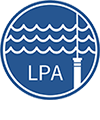Due to protection measures and changes in the overwintering habitat, the population of breeding snow geese (Chen caerulescens atlantica) on Bylot island has increased dramatically over recent years. As a result, the nutrient load originating from faecal goose droppings has increased, which may profoundly change the relative concentrations of C, N and P in the usually dilute and unproductive (oligotrophic) arctic lakes. Both nutrient loading (due to increased numbers of birds) and temperature elevation (due to rapid warming of high latitude regions) may cause large shifts in the composition and functioning of these tundra lakes.
Paleolimnological techniques will be used for this reseearch. Paleolimnology is a multidisciplinary science that studies the biological, chemical and physical information preserved in the sediments on the bottom of lakes and ponds. This approach has been conclusive for natural and anthropogenic environmental changes recontructions, such as animal perturbations.
By extracting sediment cores from lakes near breeding bird colonies, we will use paleolimnological techniques to track short- and long-term changes in lake nutrient (trophic) status and contamination. Reconstruction of past levels of trophic state (nutrients like P and N) using algal (diatoms) and invertebrate (chironomids, cladocerans) fossils and stable isotopes (δ15N) will also allow us to determine if there is a correlation between our data and the known changes in bird population size over the past 30 years. By identifying this correlation, we will be able to track long-term changes in the size of past goose populations.



